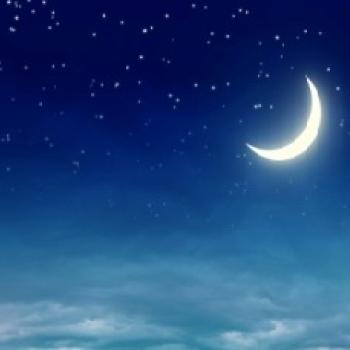Star Light, Star Bright: Reading and Writing about the Nighttime Sky

- Preview |
- Get Started |
- Comments
Activity Description
In this activity, children are given the opportunity to learn about the fascinating night sky! The child reads about the history of stars, constellations, galaxies, and other fascinating elements using a selected book. After reading, discussion, and observation of the night sky, the child writes a poem or story about what they saw using the Word Mover Mobile App or Word Mover Interactive.
Why This Is Helpful
Exploring the world around us is one of the best ways to learn! This activity helps children take something that they see daily and turn it into a learning experience through further investigation. Children are able to investigate the nighttime sky through observation and reading an informational text and apply their creativity and writing skills through a written experience.
What You Need
- Books about the night sky including the online book Starry Sky.
- Word Mover Mobile App (available for free download) OR Word Mover Interactive
- Example poem about the night sky
Here’s What To Do
- Go outside with the child after dark on a night when the stars are bright. Ask the child if he knows what a constellation is (big star patterns) and if he can identify any of them. Share with the child some of your favorites. If you're not able to go outside, explore the constellations online.
- Pull out a flashlight and together with the child, read a book about the nightsky.
- Before reading, discuss how the book is nonfiction. Take turns reading different sections and discussing the new information each of you is learning. Be sure to pay attention to the new vocabulary defined throughout the book such as constellation, the zodiac, galaxies, and others. Use the images and captions to learn additional facts.
- After finishing the book, talk to the child about the interesting myths about constellations that you learned about while reading. What star/constellation story did the child find to be the most interesting? Which tales seemed the most far-fetched? Are there other constellation stories that are different from those in the book that either you or the child has heard before? What can he imagine might be the story of some of the stars you saw together earlier?
- With the child, decide on one or more activity from the list below to do after reading the book:
- Using the Word Mover Mobile App or Word Mover Interactive, write a poem or story about an existing constellation. The child can create the poem by recalling information that he read about in the book, or observations he made when looking at the stars, or by doing additional research about the constellation online or in additional books.
- Go outside and encourage the child to locate or identify a constellation mentioned in the selected book in the night sky. He can then name the constellation, and use the Word Mover app or interactive to write a few sentences, a poem, or a short story describing the constellation and its origin as learned about in one of the selected books.
- Using binoculars or a telescope, take an “up close and personal” look at some of the stars and constellations on a dark, clear night. Have the child write a poem about what he saw using the Word Mover app or interactive. Additionally, you may wish to take the child to a different location nearby for a different/clearer view of the stars in the sky.
- Share this example as an inspiration!
- After completing the story or poem, have the child save his work and print it out to share with others!
More Ideas to Try
- Consider visiting the nearest planetarium (or an online planetarium) so that the child may learn more about the constellations that are easily seen in the area and their history.
- Learn even more about the night sky by learning about the Hubble telescope, the planets, the Milky Way - the possibilities are almost endless! Visit this site to learn more about space exploration.

Add new comment